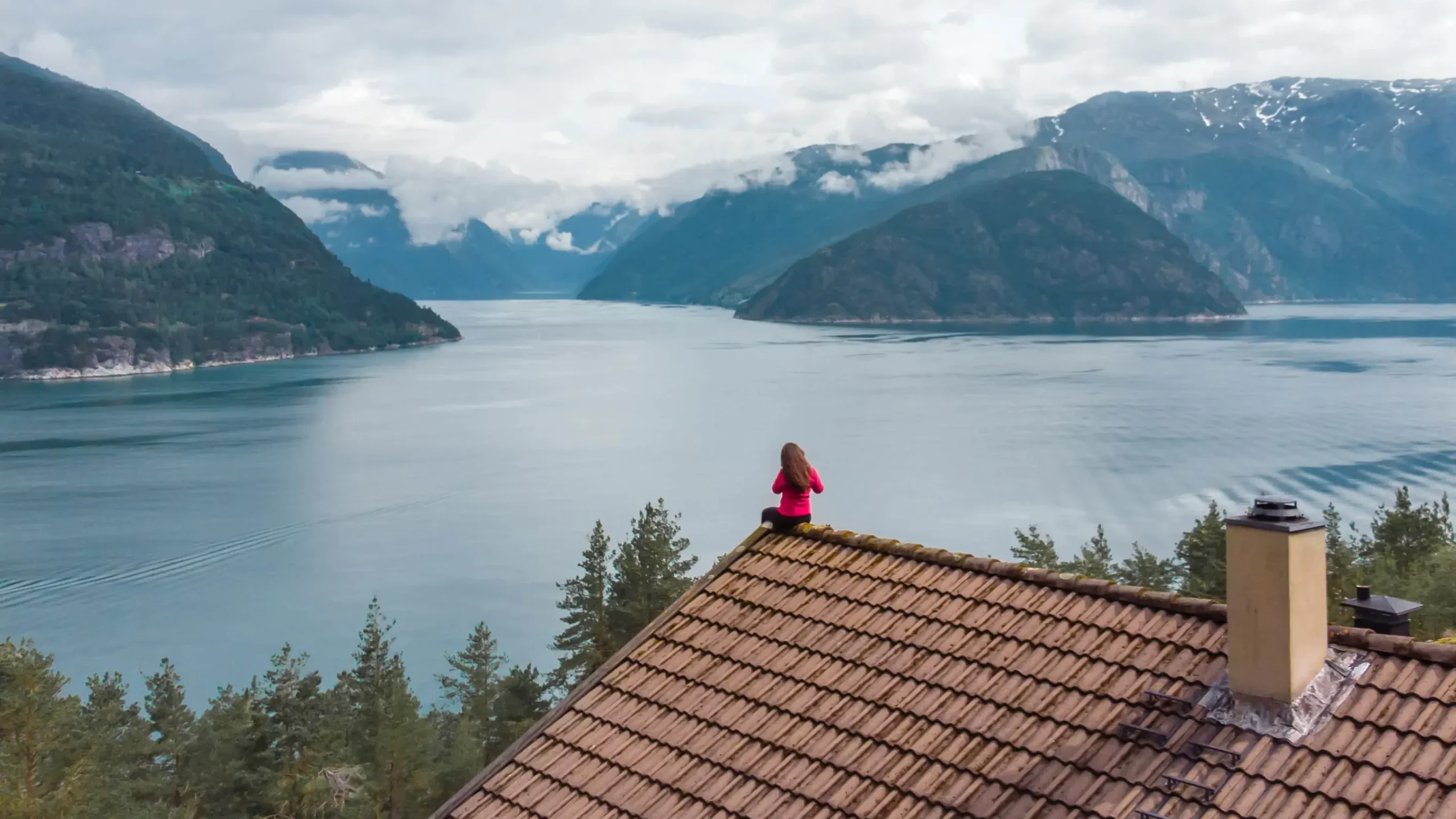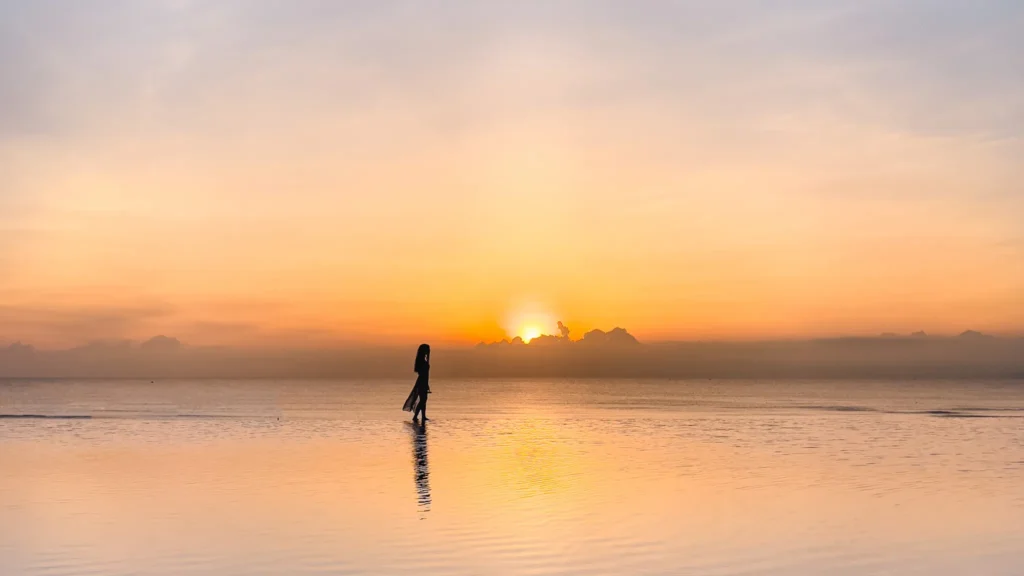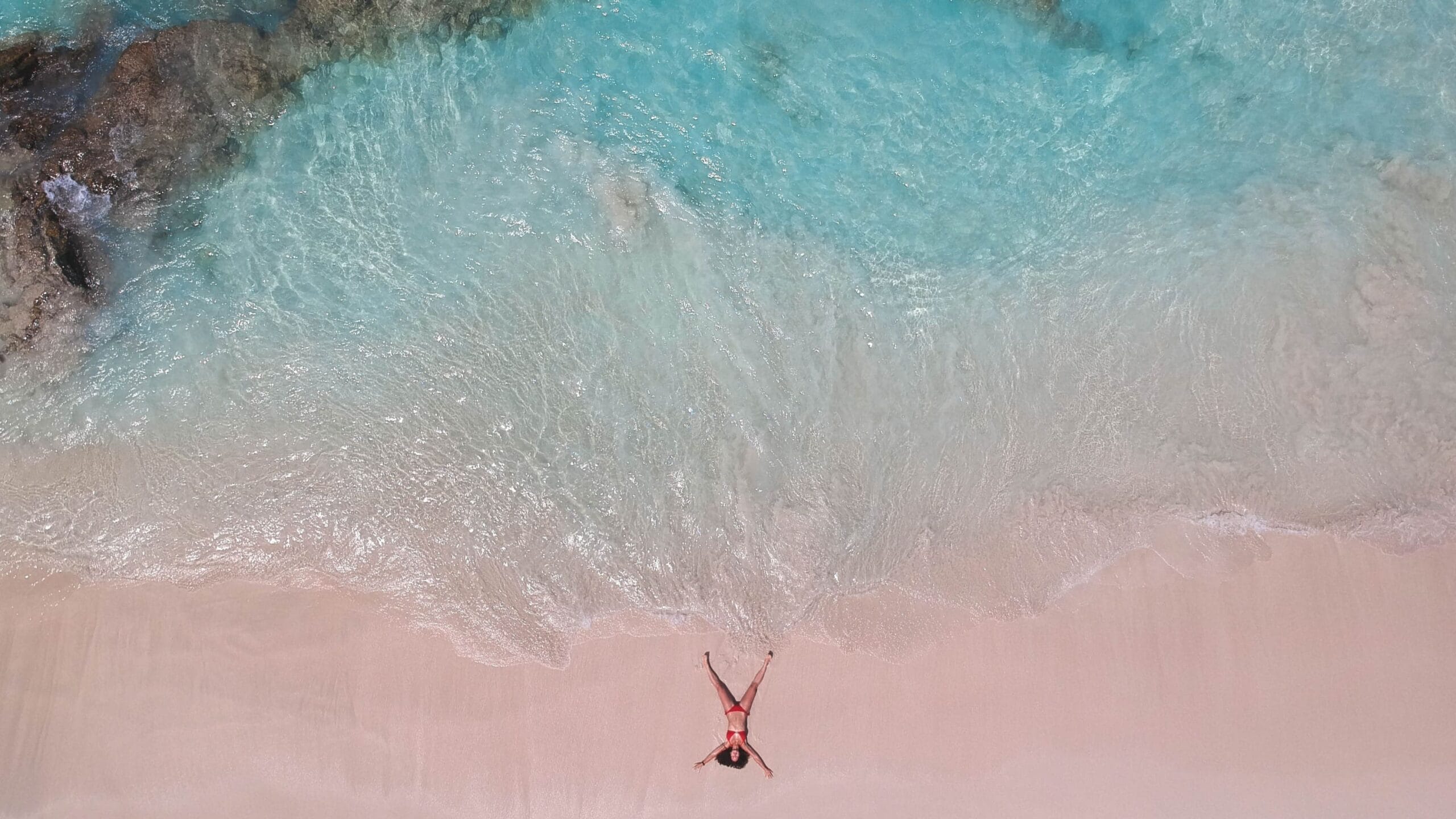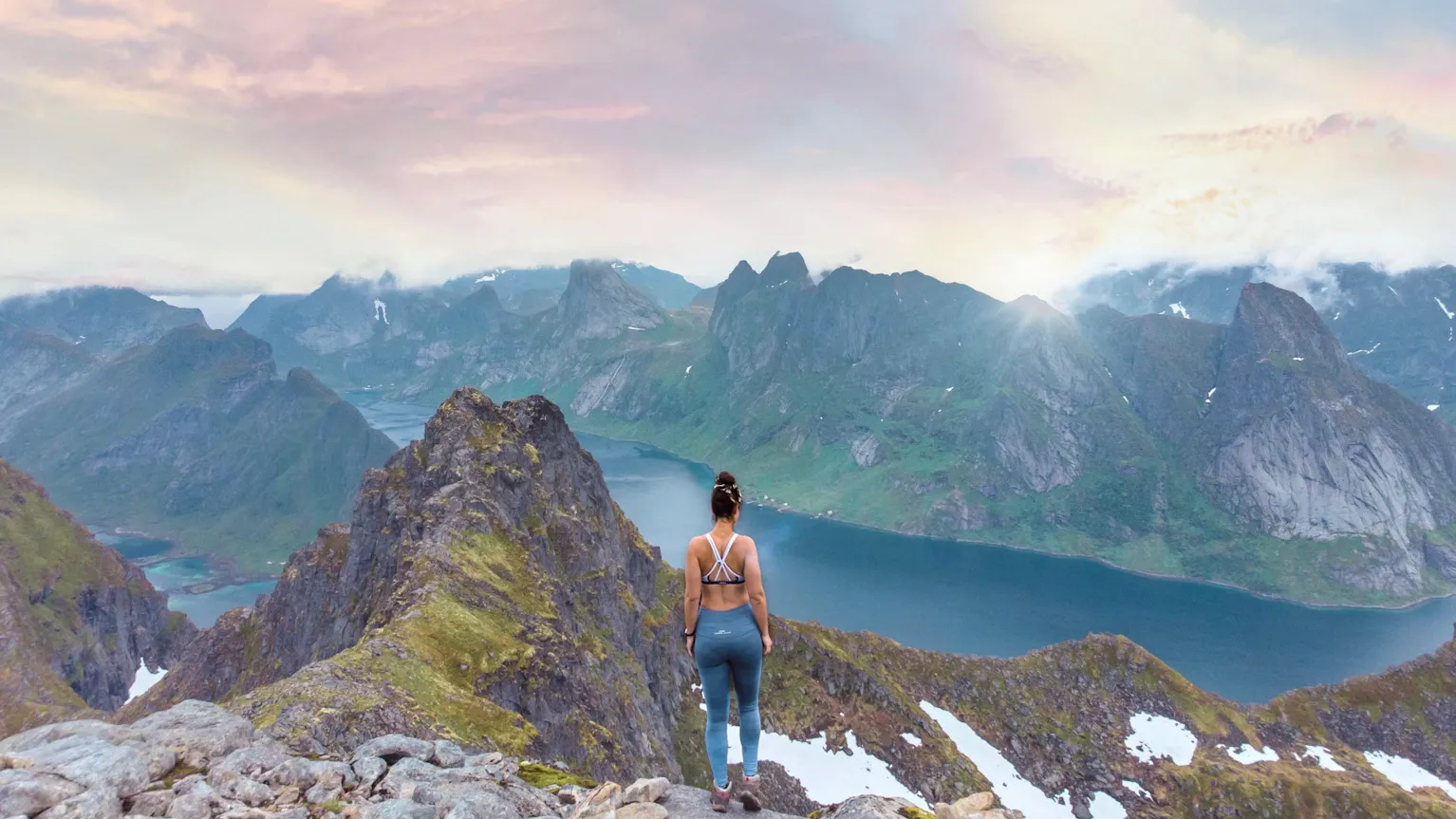
Let’s talk about Norway, a land of jaw-dropping nature, dramatic fjords, and enough waterfalls to make you question if you’re in a real-life postcard. If you’re a nature lover or a hiking enthusiast, Norway is basically your paradise. Picture this: roads winding through lush forests, crystal-clear lakes that look like mirrors, and mountains so majestic they’ll make you want to pack up your desk job and live in a tent. Many of the hikes here are so unique, you won’t find anything quite like them anywhere else in the world. It’s the kind of place that makes you stop, stare, and wonder if you’ve accidentally stepped into a fantasy novel.
👉 Want to explore more gems across Norway? Check out my region-specific guides! Like this post on the dramatic fjords, colorful fishing villages, and wild Arctic beauty of Lofoten and Senja, or this adventure-packed guide to Southern Norway, featuring Odda and iconic hikes like Preikestolen, Kjeragbolten, and Trolltunga. Yes, the views are that epic.
MENU
In this post:
Geography, History, and Language
Norway is a geographical masterpiece, stretching from the lush fjords in the South all the way to the Arctic Circle in the North. The landscape is as varied as it gets: mountains, glaciers, forests, and over 50,000 islands. Its history is steeped in Viking roots, with the iconic Norse explorers giving the country its fearless reputation. The Vikings may have sailed across the seas, but today, Norway’s modern charm blends with its ancient heritage. The official language is Norwegian, but don’t sweat it, English is widely spoken, especially in touristy areas. And with such a high level of trust in society, you’ll find that navigating the country (linguistically or otherwise) is pretty darn easy!
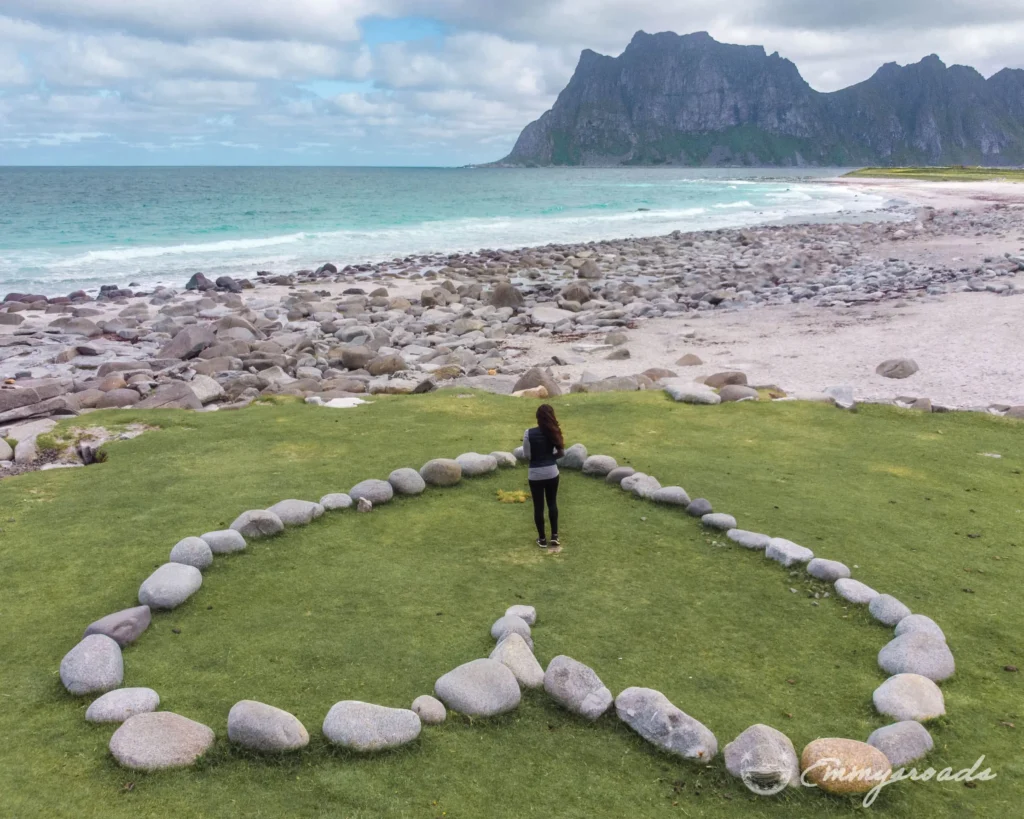
Where to Go
Norway is one of those places where every corner seems like a hidden gem, but if you’re short on time (like I was), let’s focus on the South and Arctic North. The South, especially the areas around Bergen and Stavanger, is a dream for nature lovers. Picture towering fjords, waterfalls tumbling into the sea, and hiking trails that will have you questioning how you ever lived without mountains in your life. But the Arctic North, that’s where the magic happens. I had the chance to explore the Lofoten Islands and Senja, and wow, it’s like the planet decided to get creative with landscapes.
Lofoten has sharp, dramatic peaks, crystal-clear waters, and some of the best hiking trails in the world. Senja, a little quieter, is a hidden treasure that’ll make you feel like you’re the first person to ever set foot there. The Arctic is also your best shot at catching the Northern Lights in winter, just be prepared for cold temperatures that will freeze your eyelashes off!
When to Go
If you’re planning to hike or road-trip, the best time to visit is between June and September, that’s when the weather is as close to perfect as it gets. The days are long (hello, midnight sun!), and everything’s green and lush. But, if you’re a winter wonderland kind of traveler, go between November and February for a chance to see the Northern Lights, though it will be freezing. Just keep in mind, Norway is a bit of a short-season kind of country, so your window for optimal travel is small.
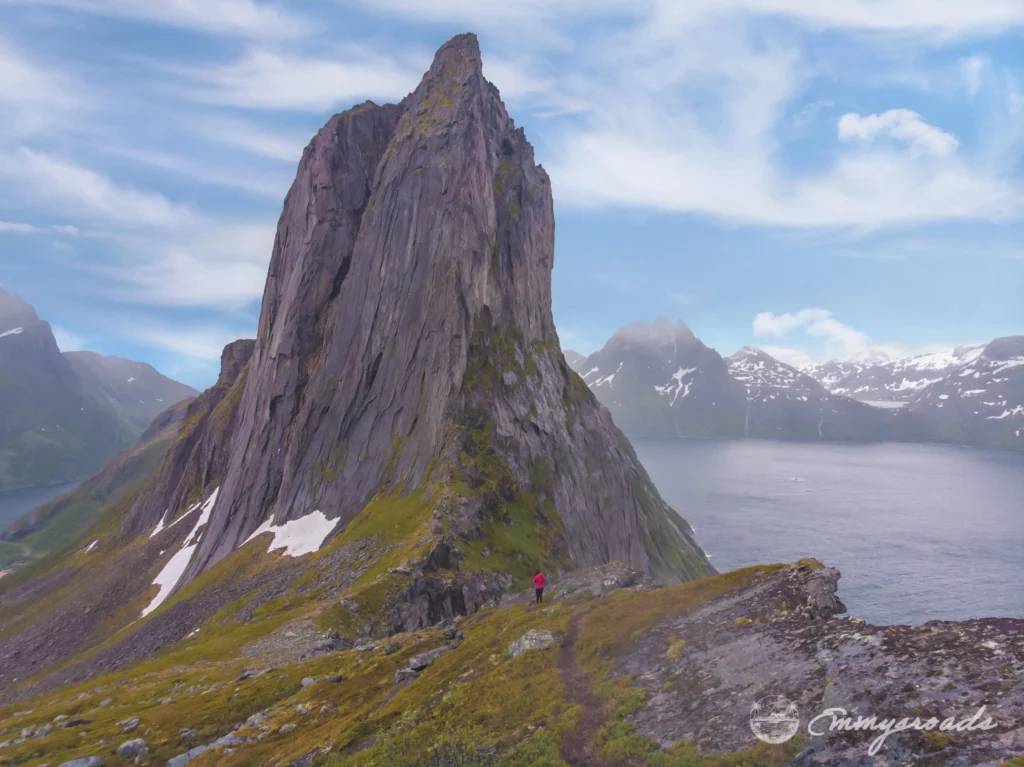
How to Get Around In Norway
Getting around Norway is pretty straightforward. If you’re sticking to the South and you are in a budget, public transport like buses and trains are reliable, and ferries are great for hopping between fjords. But for the Arctic North, it’s all about the road trip. Rent a car to explore the Lofoten Islands and Senja at your own pace. Trust me, the road views are stunning, you’ll want to stop every five minutes to take pictures. Just don’t forget to download maps on your GPS, as the roads can get pretty remote, and the signage might be a bit sparse in some areas. Check the best car deals here.
Now, Norway is huge, like, really big. So, if you’re trying to see more than just one region, prepare to fly between destinations. They can get pretty expensive, so book your flight early! Find the best flight here.
Many brave souls do the ultimate road trip, driving from South to North with a van or camper, making the most of Norway’s short but sweet travel window. There’s nothing quite like the freedom of a van life, especially when the views are basically a live-action screen saver.
How much will Norway cost you?
Well, brace yourself, Norway is not known for being budget-friendly. It’s a beautiful country, but it comes with a price tag. For the backpacker or budget traveler, expect to spend around $70-$100 a day. This includes staying in hostels, eating at local markets (good luck finding a cheap meal, though), and getting around with public transport or a rental. Want a bit more comfort? A mid-range budget will run you around $150-$200 a day. This’ll get you cozy hotels, meals at nicer restaurants, and maybe a few guided tours or activities. If you’re living the high life and staying in fancy hotels, dining at upscale spots, and possibly taking a private tour to the fjords, you’ll be looking at $250+ a day.
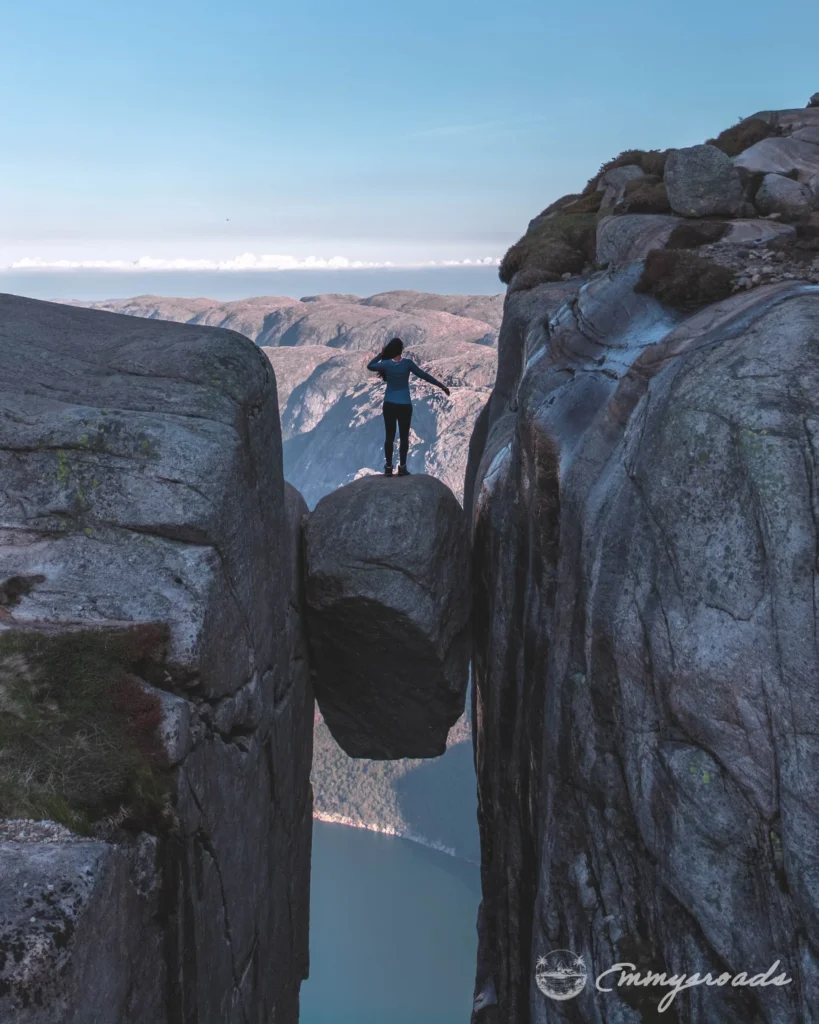
Safety
Now, let’s talk safety. As a solo female traveler, I felt like I was walking on air in Norway, the country is that safe. Seriously, it’s the safest place I’ve ever been. People here leave their houses and cars unlocked like it’s no big deal. I mean, if you leave your house open for a few hours, you’re more likely to find a neighbor’s cat curled up on your couch than anything else. The locals are friendly, trustworthy, and honestly, you’ll feel right at home. Even in the more remote areas, Norway’s low crime rate and high trust in others make it an ideal destination for solo travelers. You should have a worry-free adventure in one of the most stunning places on Earth.
WIFI/Internet Speed and Best Local Travel SIM Card In Norway
WIFI and Internet Speed in Norway
Norway boasts excellent internet connectivity. Whether you’re in a big city like Oslo or a remote village in the Arctic, you’ll find reliable, high-speed WIFI. Average download speeds hover around 80–100 Mbps, which is more than enough for streaming, uploading photos, or working remotely. Most accommodations, cafes, and even public transport offer free WIFI. However, in very remote areas like certain hiking trails, connectivity might be limited, so downloading maps offline is a good idea.
Stay secure and unlock better deals with a VPN! Protect your data, access cheaper flights, and keep streaming your favorite Netflix shows from anywhere. Fast, private, and hassle-free browsing wherever you go! Get yours here.
Best Local Travel SIM Card
For travelers looking to stay connected on the go, Norway offers several reliable SIM card options:
- Telenor: One of the largest networks in Norway, Telenor provides excellent coverage, even in remote areas. They offer prepaid SIM cards with various data plans.
- Telia: Another popular choice, Telia offers competitive rates and solid coverage, including in rural regions.
- Ice.net: Ideal for budget travelers, Ice.net provides affordable plans with decent coverage, though it may be slightly less extensive in very remote areas.
To purchase a SIM card, visit convenience stores, airports, or telecom shops. Be prepared to show ID, as SIM card registration is mandatory in Norway. For short trips, consider plans offering 5-10GB of data to cover navigation, social media, and casual browsing.
Skip the hassle of hunting for a local SIM, or doing any registration, Airalo gives you instant, affordable, and hassle-free connectivity the moment you land. No physical SIMs, no surprise fees, just seamless data in multiple countries with one easy app. Stay connected smarter, check options here.
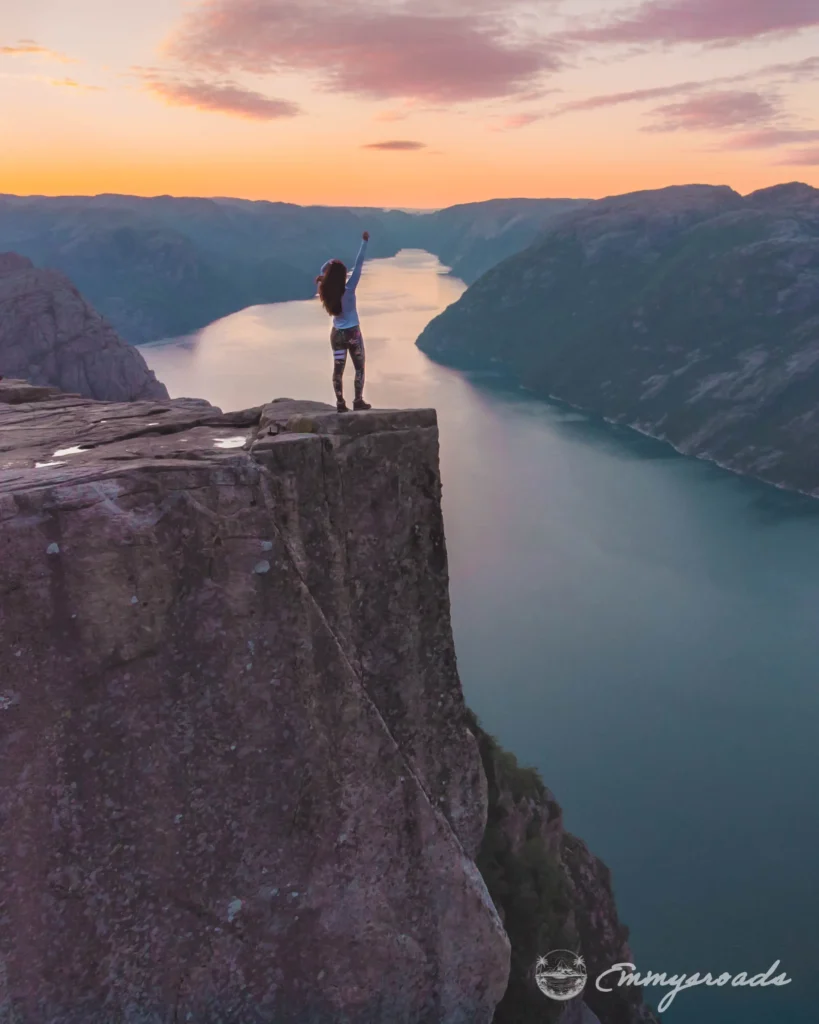
FAQ
Frequently Asked Questions About Norway
For most travelers, Norway is part of the Schengen Zone, which means citizens of countries like the U.S., Canada, Australia, and the U.K. can enter without a visa for up to 90 days within a 180-day period. However, always check the specific visa requirements for your nationality before traveling. If you plan to stay longer or work/study, you’ll need a proper visa or permit.
The best time to see the Northern Lights is from late September to early April. Head to the Arctic regions, such as Tromsø, Senja, or the Lofoten Islands, where the skies are darker, and your chances of witnessing this natural phenomenon are higher. For the best experience, consider joining a guided Northern Lights tour that takes you to prime viewing spots away from light pollution. More info on my dedicated guide.
Norwegian weather can be unpredictable, so layering is key. In summer, bring lightweight, moisture-wicking clothing, sturdy hiking boots, and a waterproof jacket. For winter, pack thermal layers, insulated boots, a heavy coat, gloves, and a hat to stay warm. No matter the season, always bring a reusable water bottle (tap water is safe and delicious) and a power bank for your devices, you’ll be snapping photos nonstop.
Final Thoughts About Norway
Is Norway worth the splurge? Hell yes. But, plan ahead, this is a destination that fills up fast, especially in the peak hiking months. And while it may be a little on the expensive side, the beauty you get to witness makes it all worthwhile. Whether you’re chasing the Northern Lights or conquering a mountain hike, Norway is the kind of place that stays with you long after you’ve left. Ready to pack your bags? Norway’s calling! Explore more with my dedicated posts below.
Just before you go: Travel insurance is a must-have for any trip—whether it’s covering medical emergencies, trip cancellations, or lost luggage, it’s your reliable backup plan. Stay worry-free and focus on the adventure, knowing you’re protected no matter what happens! Get protected here.



